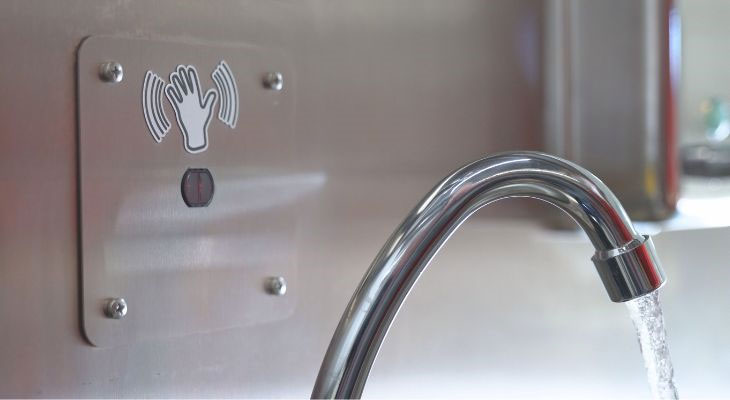
How To Retrofit a Commercial Bathroom To Make It Touchless
In these modern times, touchless technology is highly important. Touchless technology encompasses everything from automatic faucets to sensor-activated hand dryers. It not only enhances cleanliness but also adds an element of sophistication to your restrooms. Retrofitting, which involves updating and modifying existing structures or systems, is a cost-effective and efficient way to incorporate this advanced technology into your current restroom setup. Read on and learn how to retrofit a commercial bathroom to make it touchless.
Understanding Commercial Bathroom Retrofitting
In the context of commercial bathrooms, retrofitting refers to the process of upgrading and modernizing existing facilities with new technologies or systems. This involves replacing outdated fixtures and systems with newer, more efficient ones without necessarily altering the fundamental structure of the bathroom. The aim is to enhance functionality, improve efficiency, and, in some cases, meet new regulatory standards. The scope of retrofitting can range from minor adjustments, such as installing sensor-enabled faucets, to major overhauls, such as revamping the entire plumbing system.
There are several reasons why a commercial bathroom might need retrofitting. One common reason is to improve energy and water efficiency. Old fixtures and systems often consume more resources than necessary, leading to inflated utility bills. Retrofitting with new, energy-efficient models can significantly reduce these costs. Additionally, retrofitting may be necessary to comply with current health and safety regulations. For instance, touchless technology in restrooms has become increasingly important due to its hygienic benefits, especially in the wake of the COVID-19 pandemic.
The advantages of retrofitting commercial bathrooms are numerous. Primarily, these fixtures reduce operating costs, such as water and electricity bills. Secondly, they enhance the overall user experience by providing modern, high-quality amenities. This, in turn, can positively impact a company's image, demonstrating to clients, customers, and employees that the organization values quality, comfort, and sustainability. Lastly, retrofitting can ensure that commercial bathrooms comply with all relevant health, safety, and accessibility regulations, thereby avoiding potential penalties and legal issues.
The Importance of Touchless Restroom Technology
As the term implies, touchless technology allows users to operate various fixtures without physically touching them. In restrooms, this technology applies to various things, including faucets, soap dispensers, hand dryers, and even toilet flush systems. These devices utilize sensors to detect the presence or motion of a user, triggering the necessary action. For example, a sensor in a faucet activates the water flow when it detects hands underneath it and stops when the user removes their hands. This hands-free approach significantly reduces the need for physical contact with potentially germ-laden surfaces.
Adopting touchless technology in commercial restrooms presents several benefits. For one, it greatly enhances hygiene levels by limiting the spread of germs and bacteria, a feature that has become particularly vital in the wake of the COVID-19 pandemic. Also, touchless technology can contribute to water and energy conservation. Automated faucets and flush systems only operate when necessary, minimizing wastage. Moreover, these modern amenities can enhance the overall user experience by providing convenience and a sense of sophistication.
In the current market, the demand for touchless restroom technologies is rising. Health crises like the COVID-19 pandemic have underscored the importance of hygiene, pushing businesses and establishments to prioritize cleanliness and safety. As a result, there's an increasing trend toward retrofitting existing restrooms with touchless technologies. Additionally, new constructions now often include touchless features as standard. This shift in market trends reflects a growing recognition of touchless technology's value.
Retrofitting Steps and Tips
Now that you know more about retrofitting and the importance of touchless restroom technology, it's time to learn about the actual retrofitting process. Below are general steps for retrofitting a commercial restroom with modern appliances that might not apply to your situation. For more comprehensive information, consult your hardware's owner manuals and consider contacting the supplier and professional contractors.
Step 1: Plan and Design
The planning and design phase is the first step in retrofitting a commercial restroom. During this stage, it's essential to conduct a comprehensive assessment of the current state of the restroom. Identify which fixtures require replacement or upgrading. Consider the restroom layout and how the new touchless fixtures will integrate with the existing design. If necessary, seek advice from a professional designer or architect. They can provide valuable insights into the most efficient use of space and ensure that the final design complies with all relevant regulations and standards.
Step 2: Order Your Desired Automatic Fixtures
Once the planning and design phase is complete, the next step is to order the necessary automatic fixtures. This involves researching the various types of touchless technologies available on the market. When choosing fixtures, consider factors like functionality, durability, ease of use, and aesthetic appeal. It's also vital to select fixtures that fit within your budget. Order from a reputable supplier who offers quality products and good customer service. Remember-these fixtures are an investment in your business, so it's worth choosing wisely.
Step 3: Hire Contractors for Electrical, Plumbing, and Installation Services
After acquiring the desired automatic fixtures, the next step is to hire contractors. Experienced contractors have the skills and knowledge required to handle the complexities of installing touchless fixtures. Their expertise ensures that the installation process is accurate and efficient. Engaging a professional contractor is of utmost importance. Retrofitting typically entails extensive electrical work, as many touchless fixtures depend on electrical systems for operation. An adept electrician can install and configure these systems safely, ensuring they function optimally.
Additionally, plumbing work is often necessary when retrofitting restrooms. A proficient plumber can make the required adjustments to accommodate the new fixtures and maintain proper water flow. Lastly, the installation of the fixtures themselves demands precision and care. A professional installer can ensure that each fixture is secure and functioning correctly. By calling an experienced contractor who can handle all these tasks, you gain peace of mind knowing that your restroom retrofitting project is in capable hands.

